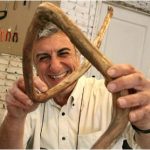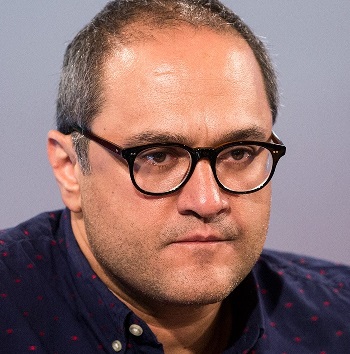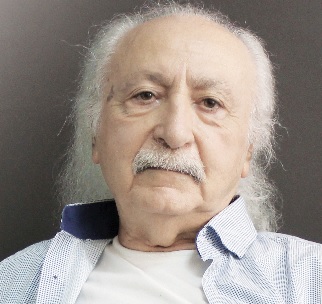Louis I. Kahn: The Making of a Room
Early Work
“The Plan – A society of rooms is a place good to live work learn”
لوئی ایزادور کان (۱۹۰۱-۱۹۷۴) معمار
“The Room is the place of the mind”
“In a small room one does not say what one would in a large room”
Louis Kahn often spoke of his notion that the first school “probably began with a man under a tree, and around him the listeners to the words of his mind.” He designed his rooms around such imagined conversations embodying the desires of the individuals who would gather within them.
Kahn’s drawings encouraged his clients to envision the conversations taking place in his buildings as a slice of real life. Here, a mother scolds a playful child in their living room, a nun gazes upward in the privacy of her cell, a family group stands at the entrance of a shopping arcade, and an assembly of worshippers pray in a synagogue. Even in his
depictions of entire buildings, Kahn peopled his drawings with anecdotal illustrations that reveal an understanding that the size and character of a room must be expressive of the conversations that take place there.Architect
Click on the thumbnail images below for a larger view.
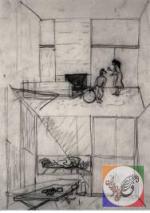
Mr. and Mrs. H. Leonard Fruchter House
Philadelphia
1951-54, unbuilt
Perspectives of Living Room
Pencil and colored pencil on paper
Louis I. Kahn Collection, University of Pennsylvania and the Pennsylvania Historical and Museum Commission
030.I.A.390.5
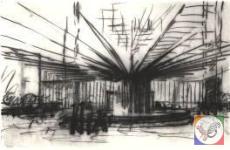
Kansas City Office Building
Kansas City, Missouri
1966-73, unbuilt
Perspective of Plaza Level Entrance to Shopping Arcade
Charcoal on tracing paper
Louis I. Kahn Collection, University of Pennsylvania and the Pennsylvania Historical and Museum Commission
030.I.A.725.309
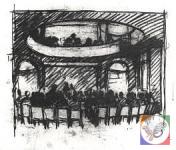
Mikveh Israel Synagogue
Philadelphia
1961-72, unbuilt
Perspective of Chapel
Pencil and Negro pencil on tracing paper
Louis I. Kahn Collection, University of Pennsylvania and the Pennsylvania Historical and Museum Commission
030.I.A.615.51
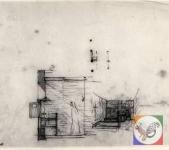
Dominican Mother House
Media, Pennsylvania
1965-69, unbuilt
Partial Plan, Section, and Perspective of Dormitory Cell
Pencil and Negro pencil on tracing paper
Louis I. Kahn Collection, University of Pennsylvania and the Pennsylvania Historical Museums Commission
030.I.A.700.80
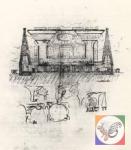
Hurva Synagogue
Jerusalem
1967-74, unbuilt
Section Studies
Graphite and Negro pencil on tracing paper
Louis I. Kahn Collection, University of Pennsylvania and the Pennsylvania Historical and Museum Commission
030.I.A.755.26
“A room with only one other person could be generative. The vectors of each meet”
Architect
“A room is not a room without natural light”
منبع : سایت
Louis Kahn: The Making of a Room
Louis Isadore Kahn (March 5 [O.S. February 20] 1901 – March 17, 1974) was an American architect, based in Philadelphia. After working in various capacities for several firms in Philadelphia, he founded his own atelier in 1935. While continuing his private practice, he served as a design critic and professor of architecture at Yale School of Architecture from 1947 to 1957.
From 1957 until his death, he was a professor of architecture at the School of Design at the University of Pennsylvania. Kahn created a style that was monumental and monolithic; his heavy buildings do not hide their weight, their materials, or the way they are assembled. Louis Kahn’s works are considered as monumental beyond modernism. Famous for his meticulously built works, his provocative proposals that remained unbuilt, and his teaching, Kahn was one of the most influential architects of the twentieth century. He was awarded the AIA Gold Medal and the RIBA Gold Medal. At the time of his death he was considered by some as “America’s foremost living architect
Biography
Early life

Louis Kahn, whose original name was Itze-Leib (Leiser-Itze) Schmuilowsky (Schmalowski), was born into a poor Jewish family in Pärnu,[4] formerly in czarist Russia, but now in Estonia. He spent his early childhood in Kuressaare on the island of Saaremaa, then part of the Russian Empire’s Livonian Governorate.[1] At the age of three, he saw coals in the stove and was captivated by the light of the coal. He put the coal in his apron, which caught on fire and seared his face.[5] He carried these scars for the rest of his life.[6]
In 1906, his family emigrated to the United States, as they feared that his father would be recalled into the military during the Russo-Japanese War. His birth year may have been inaccurately recorded in the process of immigration. According to his son’s 2003 documentary film, the family could not afford pencils. They made their own charcoal sticks from burnt twigs so that Louis could earn a little money from drawings. Later he earned money by playing piano to accompany silent movies in theaters. He became a naturalized citizen on May 15, 1914. His father changed their name to Kahn in 1915.
Career
Kahn trained at the University of Pennsylvania in a rigorous Beaux-Arts tradition, with its emphasis on drawing. After completing his Bachelor of Architecture in 1924, Kahn worked as senior draftsman in the office of the city architect, John Molitor. He worked on the designs for the 1926 Sesquicentennial Exposition.
In 1928, Kahn made a European tour. He was interested particularly in the medieval walled city of Carcassonne, France, and the castles of Scotland, rather than any of the strongholds of classicism or modernism.[9] After returning to the United States in 1929, Kahn worked in the offices of Paul Philippe Cret, his former studio critic at the University of Pennsylvania, and then with Zantzinger, Borie and Medary in Philadelphia.
In 1932, Kahn and Dominique Berninger founded the Architectural Research Group, whose members were interested in the populist social agenda and new aesthetics of the European avant-gardes. Among the projects Kahn worked on during this collaboration are schemes for public housing that he had presented to the Public Works Administration, which supported some similar projects during the Great Depression. They remained unbuilt.

Among the more important of Kahn’s early collaborations was one withGeorge Howe.[10] Kahn worked with Howe in the late 1930s on projects for the Philadelphia Housing Authority and again in 1940, along with German-born architect Oscar Stonorov, for the design of housing developments in other parts of Pennsylvania.[11] A formal architectural office partnership between Kahn and Oscar Stonorov began in February 1942 and ended in March 1947, which produced fifty-four documented projects and buildings.[12][13]
Kahn did not arrive at his distinctive architectural style until he was in his fifties. Initially working in a fairly orthodox version of the International Style, he was influenced vitally by a stay as Architect in Residence at the American Academy in Rome during 1950, which marked a turning point in his career. After visiting the ruins of ancient buildings in Italy, Greece, and Egypt, he adopted a back-to-the-basics approach. He developed his own style as influenced by earlier modern movements, but not limited by their sometimes-dogmatic ideologies.
In 1961 he received a grant from the Graham Foundation for Advanced Studies in the Fine Arts to study traffic movement in Philadelphia and to create a proposal for a viaduct system
He described this proposal at a lecture given in 1962 at the International Design Conference in Aspen, Colorado:
In the center of town the streets should become buildings. This should be interplayed with a sense of movement which does not tax local streets for non-local traffic. There should be a system of viaducts which encase an area which can reclaim the local streets for their own use, and it should be made so this viaduct has a ground floor of shops and usable area. A model which I did for the Graham Foundation recently, and which I presented to Mr. Entenza, showed the scheme.
Kahn’s teaching career began at Yale University in 1947. He eventually was named as the Albert F. Bemis Professor of Architecture and Planning at Massachusetts Institute of Technology in 1956. Kahn then returned to Philadelphia to teach at the University of Pennsylvania from 1957 until his death, becoming the Paul Philippe Cret Professor of Architecture. He also was a visiting lecturer at Princeton University from 1961 to 1967.
Legacy and honors
Kahn was elected a Fellow in the American Institute of Architects (AIA) in 1953. He was made a member of the National Institute of Arts and Letters in 1964. He was awarded the Frank P. Brown Medal in 1964. In 1965 he was elected into the National Academy of Design as an Associate Academician. He was made a member of theAmerican Academy of Arts and Sciences in 1968 and awarded the AIA Gold Medal, the highest award given by the AIA, in 1971,[17] and the Royal Gold Medal by the RIBA, in 1972.
Jatiyo Sangshad Bhaban
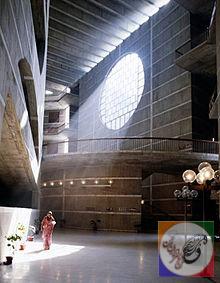
Jatiyo Sangshad Bhaban (National Assembly Building) in Dhaka, Bangladesh, is perhaps the most important building designed by Kahn. Kahn got the design contract with the help of Muzharul Islam, one of his students at Yale University, who worked with him on the project. It was Kahn’s last project, developed during 1962 to 1974. The Parliament building is the centerpiece of the national capital complex designed by Kahn that includes hostels, dining halls, and a hospital. According to Robert McCarter, author of Louis I. Kahn, »it is one of the twentieth century’s greatest architectural monuments, and is without question Kahn’s magnum opus.
Death
In 1974, Kahn died of a heart attack in a restroom for men at Penn Station in Manhattan.[3] He had just returned from a work trip to India. Owing to police miscommunications in both New York City and Philadelphia, his wife and his office were not notified until two days after his death. After his long career, he was in debt when he died.
Personal life
Kahn had three children with three women. With his wife, Esther, whom he married in 1930, he had a daughter, Sue Ann. With Anne Tyng, who began her working collaboration and personal relationship with Kahn in 1945, he also had a daughter, Alexandra Tyng. When Tyng became pregnant in 1953, to mitigate the scandal, she went to Rome, Italy, for the birth of their daughter. With Harriet Pattison, he had a son, Nathaniel Kahn.
Kahn’s obituary in the New York Times, written by Paul Goldberger, mentions only Esther and his daughter by her as survivors. All of his children and their mothers attended the funeral. In 2003 his son with Pattison, Nathaniel Kahn, released a documentary about his father, entitled, My Architect: A Son’s Journey. The Oscar-nominated film provides views and insights into the architecture of Kahn while exploring him personally through people who knew him: family, friends, and colleagues. It includes interviews with such renowned architectural contemporaries as Muzharul Islam, B. V. Doshi, Frank Gehry, Ed Bacon, Philip Johnson, I. M. Pei, Vincent J. Scully, and Robert A. M. Stern. It also provides insights into Kahn’s unusual and complicated family arrangements.
Designs
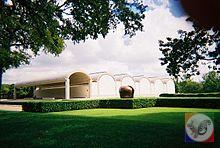
- Yale University Art Gallery, New Haven, Connecticut (1951–1953), the first significant commission of Louis Kahn and his first masterpiece, replete with technical innovations. For example, he designed a hollow concrete tetrahedral space-frame that did away with the need for ductwork and reduced the floor-to-floor height by channeling air through the structure itself. Like many of Kahn’s buildings, the Art Gallery makes subtle references to its context while overtly rejecting any historical style.
- Richards Medical Research Laboratories, University of Pennsylvania,Philadelphia, Pennsylvania (1957–1965), a breakthrough in Kahn’s career that helped set new directions for modern architecture with its clear expression of served and servant spaces and its evocation of the architecture of the past.
- The Salk Institute, La Jolla, California (1959–1965) was to be a campus composed of three main clusters: meeting and conference areas, living quarters, and laboratories. Only the laboratory cluster, consisting of two parallel blocks enclosing a water garden, was built. The two laboratory blocks frame a long view of the Pacific Ocean, accentuated by a thin linear fountain that seems to reach for the horizon.
- First Unitarian Church, Rochester, New York (1959–1969), named as one of the greatest religious structures of the twentieth century by Paul Goldberger, the Pulitzer Prize-winning architectural critic.[20] Tall, narrow window recesses create an irregular rhythm of shadows on the exterior while four light towers flood the sanctuary walls with indirect, natural light.
- Jatiyo Sangshad Bhaban (National Assembly Building) in Dhaka, Bangladesh (1962–1974)
- Shaheed Suhrawardy Medical College and Hospital, Dhaka, Bangladesh
- Indian Institute of Management, Ahmedabad, in Ahmedabad, India (1962)
- National Institute of Cardiovascular Diseases (NICVD), Dhaka, Bangladesh (1963)
- Phillips Exeter Academy Library, Exeter, New Hampshire (1965–1972), awarded the Twenty-five Year Award by the American Institute of Architects in 1997. It is famous for its dramatic atrium with enormous circular openings into the book stacks.
- Kimbell Art Museum, Fort Worth, Texas (1967–1972), features repeated bays of cycloid-shaped barrel vaults with light slits along the apex, which bathe the artwork on display in an ever-changing diffuse light.
- Hurva Synagogue, Jerusalem, Israel, (1968–1974), unbuilt
- Yale Center for British Art, Yale University, New Haven, Connecticut (1969–1974)
- Franklin D. Roosevelt Four Freedoms Park, Roosevelt Island, New York (1972–1974), construction completed 2012
Timeline of works

All dates refer to the year project commenced
- 1935 – Jersey Homesteads Cooperative Development, Hightstown, New Jersey
- 1940 – Jesse Oser House, 628 Stetson Road, Elkins Park, Pennsylvania
- 1947 – Phillip Q. Roche House, 2101 Harts Lane, Conshohocken, Pennsylvania
- 1951 – Yale University Art Gallery, 1111 Chapel Street, New Haven, Connecticut
- 1952 – City Tower Project, Philadelphia, Pennsylvania (unbuilt)
- 1954 – Jewish Community Center (aka Trenton Bath House), 999 Lower Ferry Road, Ewing, New Jersey
- 1956 – Wharton Esherick Studio, 1520 Horseshoe Trail, Malvern, Pennsylvania (designed with Wharton Esherick)
- 1957 – Richards Medical Research Laboratories, University of Pennsylvania, 3700 Hamilton Walk, Philadelphia, Pennsylvania
- 1957 – Fred E. and Elaine Cox Clever House, 417 Sherry Way, Cherry Hill, New Jersey
- 1959 – Margaret Esherick House, 204 Sunrise Lane, Chestnut Hill, Philadelphia, Pennsylvania[21]
- 1958 – Tribune Review Publishing Company Building, 622 Cabin Hill Drive, Greensburg, Pennsylvania
- 1959 – Salk Institute for Biological Studies, 10 North Torrey Pines Road, La Jolla, California
- 1959 – First Unitarian Church, 220 South Winton Road, Rochester, New York
- 1960 – Erdman Hall Dormitories, Bryn Mawr College, Morris Avenue, Bryn Mawr, Pennsylvania
- 1960 – Norman Fisher House, 197 East Mill Road, Hatboro, Pennsylvania
- 1961 – Point Counterpoint II, barge used by the American Wind Symphony Orchestra
- 1961 – Philadelphia’s Mikveh Israel, Philadelphia, Pennsylvania (unbuilt)
- 1962 – Indian Institute of Management, Ahmedabad, India
- 1962 – Jatiyo Sangshad Bhaban, the National Assembly Building of Bangladesh, Dhaka, Bangladesh
- 1963 – President’s Estate, Islamabad, Pakistan (unbuilt)
- 1965 – Phillips Exeter Academy Library, Front Street, Exeter, New Hampshire
- 1966 – Kimbell Art Museum, 3333 Camp Bowie Boulevard, Fort Worth, Texas
- 1966 – Olivetti-Underwood Factory, Valley Road, Harrisburg, Pennsylvania
- 1966 – Temple Beth El of Northern Westchester, Chappaqua, New York
- 1968 – Hurva Synagogue, Jerusalem, Israel (unbuilt)
- 1969 – Yale Center for British Art, Yale University, 1080 Chapel Street, New Haven, Connecticut
- 1971 – Steven Korman House, Sheaff Lane, Fort Washington, Pennsylvania
- 1973 – The Arts United Center (Formerly known as the Fine Arts Foundation Civic Center), Fort Wayne, Indiana
- 1974 – Franklin D. Roosevelt Four Freedoms Park, Roosevelt Island, New York City, New York, completed 2012.
- 1979 – Flora Lamson Hewlett Library of the Graduate Theological Union, Berkeley, California
Legacy


Louis Kahn’s work infused theInternational style with a fastidious, highly personal taste, a poetry of light. His few projects reflect his deep personal involvement with each. Isamu Noguchicalled him »a philosopher among architects.« He was known for his ability to create monumental architecture that responded to the human scale. He also was concerned with creating strong formal distinctions between served spaces and servant spaces. What he meant by servant spaces was not spaces for servants, but rather spaces that serve other spaces, such as stairwells, corridors, restrooms, or any other back-of-house function such as storage space or mechanical rooms. His palette of materials tended toward heavily textured brick and bare concrete, the textures often reinforced by juxtaposition to highly refined surfaces such as travertine marble.
While widely known for his the poetic sensibilities of his spaces, Kahn also worked closely with engineers and contractors on his buildings. The results often were technically innovative and highly refined. In addition to the influence Kahn’s more well-known work has on contemporary architects (such asMuzharul Islam, Tadao Ando), some of his work (especially the unbuilt City Tower Project) became very influential among the high-tech architects of the late twentieth century (such as Renzo Piano, who worked in Kahn’s office,Richard Rogers, and Norman Foster). His prominent apprentices includeMuzharul Islam, Moshe Safdie, Robert Venturi, Jack Diamond, and Charles Dagit.
Many years after his death, Kahn continues to provoke controversy. Before his Franklin D. Roosevelt Four Freedoms Park at the southern tip of Roosevelt Island was built a New York Times editorial opined:
There’s a magic to the project. That the task is daunting makes it worthy of the man it honors, who guided the nation through the Depression, the New Deal and a world war. As for Mr. Kahn, he died in 1974, as he passed alone through New York City’s Penn Station. In his briefcase were renderings of the memorial, his last completed plan.
The editorial describes Kahn’s plan as:
…simple and elegant. Drawing inspiration from Roosevelt’s defense of the Four Freedoms – of speech and religion, and from want and fear – he designed an open ‘room and a garden’ at the bottom of the island. Trees on either side form a ‘V’ defining a green space, and leading to a two-walled stone room at the water’s edge that frames the United Nations and the rest of the skyline.
Critics note that the panoramic view of Manhattan and the United Nations building are blocked by the walls of that room and by the trees. Other as-yet-unanswered critics have argued more broadly that not enough thought has been given to what visitors to the memorial would be able to do at the site. The proposed project was opposed by a majority of island residents who were surveyed by the Trust for Public Land, a national land conservation group currently working extensively on the island.
The movement for the memorial, which was conceived by Kahn’s firm almost 35 years ago, needed to raise $40 million by the end of 2007; as of July 20, it had collected $5.1 million. There is a merest hint in Architectural Record about the oft-heard argument that the project must be built because it literally, was Kahn’s last; this is rebutted by those who say the plans are not enough like Kahn’s other work to be touted as a memorial to Kahn as well as FDR.
In popular culture
Pulitzer Prize-winning composer Lewis Spratlan, with collaborators Jenny Kallick and John Downey (Amherst College class of 2003), composed the chamber opera Architect as a character study of Kahn. The premiere recording was due to be released in 2012 by Navona Records.
Kahn was the subject of the Oscar-nominated documentary film My Architect: A Son’s Journey, presented by Nathaniel Kahn, his son. Kahn’s complicated family life inspired the »Undaunted Mettle« episode of Law & Order: Criminal Intent.
In the film Indecent Proposal, character David Murphy (played by Woody Harrelson), referenced Kahn during a lecture to architecture students, attributing the quote »Even a brick wants to be something« to Kahn.
Architecturally-inspired ice cream sandwich maker Coolhaus, based in Los Angeles, California, named a cookie and ice cream combination after Kahn. Dubbed »Louis Ba-kahn«, the sandwich consists of chocolate chip cookies and Brown Butter Candied Bacon ice cream
- گل میخ چوبی مناسب دربهای قدیمی
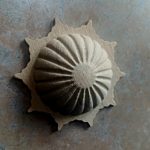 گل میخهای چوبی میتوانند انتخاب مناسبی برای دربهای قدیمی باشند. آنها میتوانند به دربهای قدیمی ظاهری گرم و صمیمی ببخشند و همچنین میتوانند برای آویزان کردن کلاه، کت یا سایر وسایل استفاده شوند.
گل میخهای چوبی میتوانند انتخاب مناسبی برای دربهای قدیمی باشند. آنها میتوانند به دربهای قدیمی ظاهری گرم و صمیمی ببخشند و همچنین میتوانند برای آویزان کردن کلاه، کت یا سایر وسایل استفاده شوند. - آنچه باید درمورد نصب درب چوبی طوفان بدانید
 درهای چوبی طوفان یکی از کاربردی ترین و مفیدترین انواع درب هایی است که در ورودی خانه پیدا می کنید . آنها به عنوان یک درب خارجی اضافی طراحی شده اند ، درب های بیرونی سنتی را در هوای نامناسب و دمای سردتر محافظت می کنند . آنها همچنین می توانند عایق بندی اضافی ارائه… بیشتر بخوانید: آنچه باید درمورد نصب درب چوبی طوفان بدانید
درهای چوبی طوفان یکی از کاربردی ترین و مفیدترین انواع درب هایی است که در ورودی خانه پیدا می کنید . آنها به عنوان یک درب خارجی اضافی طراحی شده اند ، درب های بیرونی سنتی را در هوای نامناسب و دمای سردتر محافظت می کنند . آنها همچنین می توانند عایق بندی اضافی ارائه… بیشتر بخوانید: آنچه باید درمورد نصب درب چوبی طوفان بدانید - نکات برتر برای نصب درب چوبی جدید
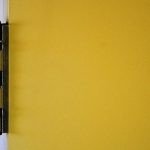 برای نصب درب چوبی جدید ، وقت بگذارید ، اصول را بیاموزید – و نترسید ! بیشتر صاحبان خانه درب چوبی جدیدی نصب می کنند تا درب چوبی قدیمی را که آسیب دیده یا کوتاه شده است ، متناسب با کف موجود قرار انتخاب کنند – اگر برای اندازه گیری وقت بگذارید ، یک رفع… بیشتر بخوانید: نکات برتر برای نصب درب چوبی جدید
برای نصب درب چوبی جدید ، وقت بگذارید ، اصول را بیاموزید – و نترسید ! بیشتر صاحبان خانه درب چوبی جدیدی نصب می کنند تا درب چوبی قدیمی را که آسیب دیده یا کوتاه شده است ، متناسب با کف موجود قرار انتخاب کنند – اگر برای اندازه گیری وقت بگذارید ، یک رفع… بیشتر بخوانید: نکات برتر برای نصب درب چوبی جدید - ایستگاه های شارژ آشپزخانه بسیار کاربردی
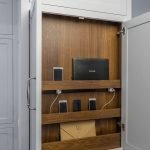 عملکرد های ایستگاه های شارژ آشپزخانه امروزه هر یک از ما وسیله های زیادی در دست داریم : تلفن ، تبلت ، کتابخوان الکترونیکی و بسیاری دیگر ، این به این معنی است که شارژ بیش از همیشه مورد نیاز است . ما باید در همه جا وسیله هایمان را شارژ کنیم ، نه تنها… بیشتر بخوانید: ایستگاه های شارژ آشپزخانه بسیار کاربردی
عملکرد های ایستگاه های شارژ آشپزخانه امروزه هر یک از ما وسیله های زیادی در دست داریم : تلفن ، تبلت ، کتابخوان الکترونیکی و بسیاری دیگر ، این به این معنی است که شارژ بیش از همیشه مورد نیاز است . ما باید در همه جا وسیله هایمان را شارژ کنیم ، نه تنها… بیشتر بخوانید: ایستگاه های شارژ آشپزخانه بسیار کاربردی - 12 چوب شایسته برای میزهای آشپزخانهما گزینه هایی را که شامل بهترین نوع چوب برای میز آشپزخانه است ، در این مقاله جمع کردیم ، خواه شما به یک میز کاربردی علاقه داشته باشید یا یک جزیره زیبا . انتخاب نوع چوب و رنگ آن مهمترین عامل زیبایی در آشپزخانه و دکوراسیون خانه شماست . شما به جز رنگ و… بیشتر بخوانید: 12 چوب شایسته برای میزهای آشپزخانه



